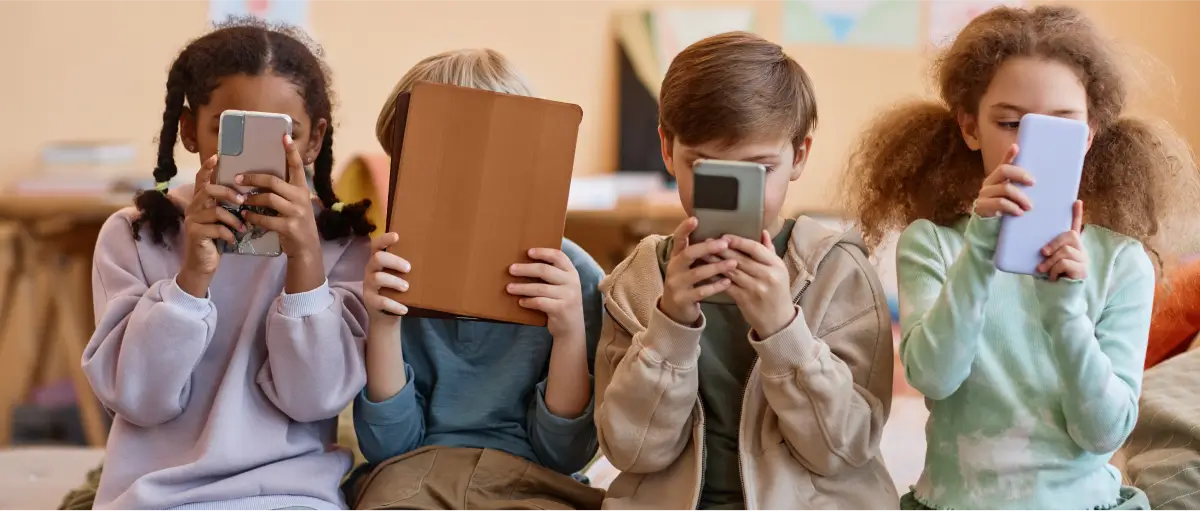
Posted on 01/06/2025 10:10:02 AM PST by jerod
With 'near time' identified as a problem, parents urged to boosting outdoor time
New research shows the rate of myopia among children and teens worldwide has tripled over the past three decades, with a particularly steep increase noted since the start of the COVID-19 pandemic in 2020.
A paper in the British Journal of Ophthalmology, which reviewed 276 studies published to June 2023 from around the world, concluded that more than one in three of all children and teens are nearsighted, triple what it was in 1990.
"Emerging evidence suggests a potential association between the pandemic and accelerated vision deterioration among young adults," states the report, published in September.
The authors forecast that if the current trends continue, about 740 million children and teens — more than half globally — will be myopic by 2050.
The paper estimates the current rate of myopia among children in Canada at roughly 25 per cent. That number is lower than the international average but it's still a significant increase from the prevalence of 17.5 per cent, concluded by University of Waterloo researchers in a paper published in early 2018.
"Myopia has increased dramatically during the period of COVID," said Lisa Christian, associate director of clinical practice at the University of Waterloo School of Optometry.
Christian said the research suggests the trends are linked to kids spending more time indoors doing what's known as "near work," such as looking at books, computers or phone screens. The strain this puts on the eye muscles can cause myopia.
"When we're indoors, we're focused on near work most of the time, we're looking at one spot," Christian told CBC News in an interview. "When we're outside, we're looking far away, so we're relaxing our eyes."
Successive studies have shown how myopia is related to too little time outdoors in childhood.
The 2018 University of Waterloo study, which focused on children aged six to 13, found that one additional hour of outdoor time per week could lower the child's odds of developing myopia by 14 per cent. "Time spent outdoors was the only child activity to have a significant impact on myopia," it stated....
Nor those hand held little computers that kids seem to be staring into all day long.
To me it seems more likely staring at screens all the time.
suggests a potential association
“Don’t worry... It has nothing to do with the shots. /s””
You have a myopic view of the facts.
Pretty much that. Near work.
During the virus, the kids were kept away from other people.
They were never in danger but their grandparents were, so limiting infections was a good thing . . .for the grandparents.
Computer screen time of spending entire school days in front of a computer did this.
Staring into a phone every waking moment will no doubt affect a person’s vision, probably more so for young eyes.
I’ve been thinking lately that glasses are like dental braces; if you can pay for them, you need them. I was diagnosed as needing glasses 40 years ago. I’ve never worn them and I’ve functioned quite well.
I needed and received glasses when I was 14.
Wore glasses and/or contacts for 48 years. Vision was 20/250.
In 2010 I became the fourth person in my family’s history to get 2nd sight which is where your farsightedness overrides your nearsightedness and you have perfect vision.
Vision now is 20/15.
Little Sis is nearsighted and has worn glasses all her life. As farsightedness kicked in with age her vision has gotten better.

God bless her as it truly is a heaven sent blessing
By the time she was in her thirties, her vision had improved a bit. Her older glasses became ‘too strong’.
It would be interesting to compare Rhode Island to Wyoming
Uveitis and Other Ocular Complications Following COVID-19 Vaccination
Hmmm.....When I was a kid they said we’d go blind..............
Disclaimer: Opinions posted on Free Republic are those of the individual posters and do not necessarily represent the opinion of Free Republic or its management. All materials posted herein are protected by copyright law and the exemption for fair use of copyrighted works.